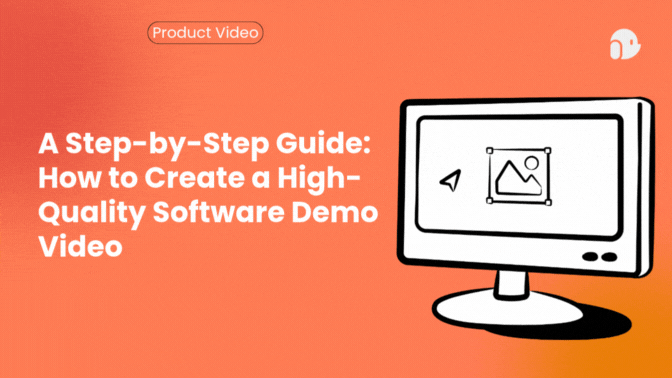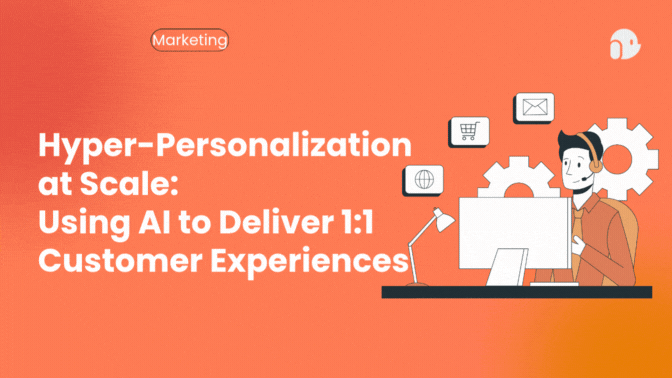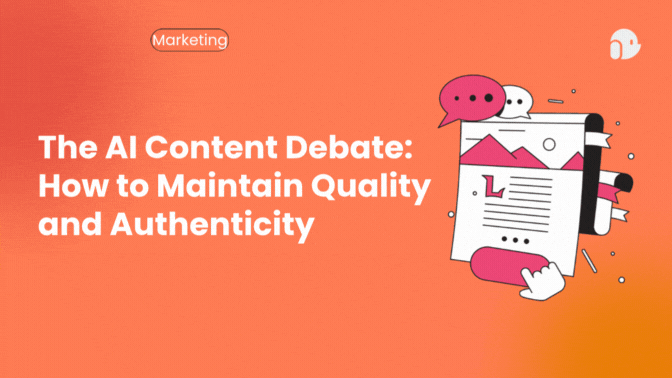Top 10 AI Marketing Tools Every Digital Strategist Needs
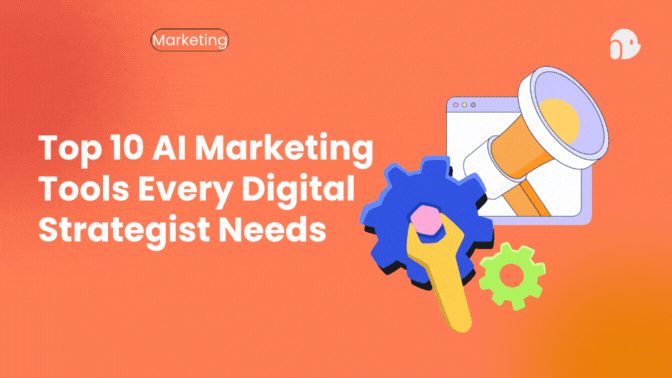
AI in marketing has moved from experimental to essential. Suppose you’re juggling content calendars, personalization, attribution, and social listening all at once. Welcome to modern marketing. This list condenses the tools that actually move the needle: the ones I’d recommend to a busy strategist who wants measurable wins, not shiny toys.
Why these tools matter
AI isn’t here to replace marketers; it’s here to make us better at the parts humans do best: strategy, creativity, and relationships. The right AI marketing tools free your team from repetitive work, surface better insights, and help you scale without losing your brand voice.
Now let’s walk through ten tools that cover content, SEO, CRM, attribution, social listening, and media, plus where puppydog.io fits in if you’re selling software or need polished demo videos.
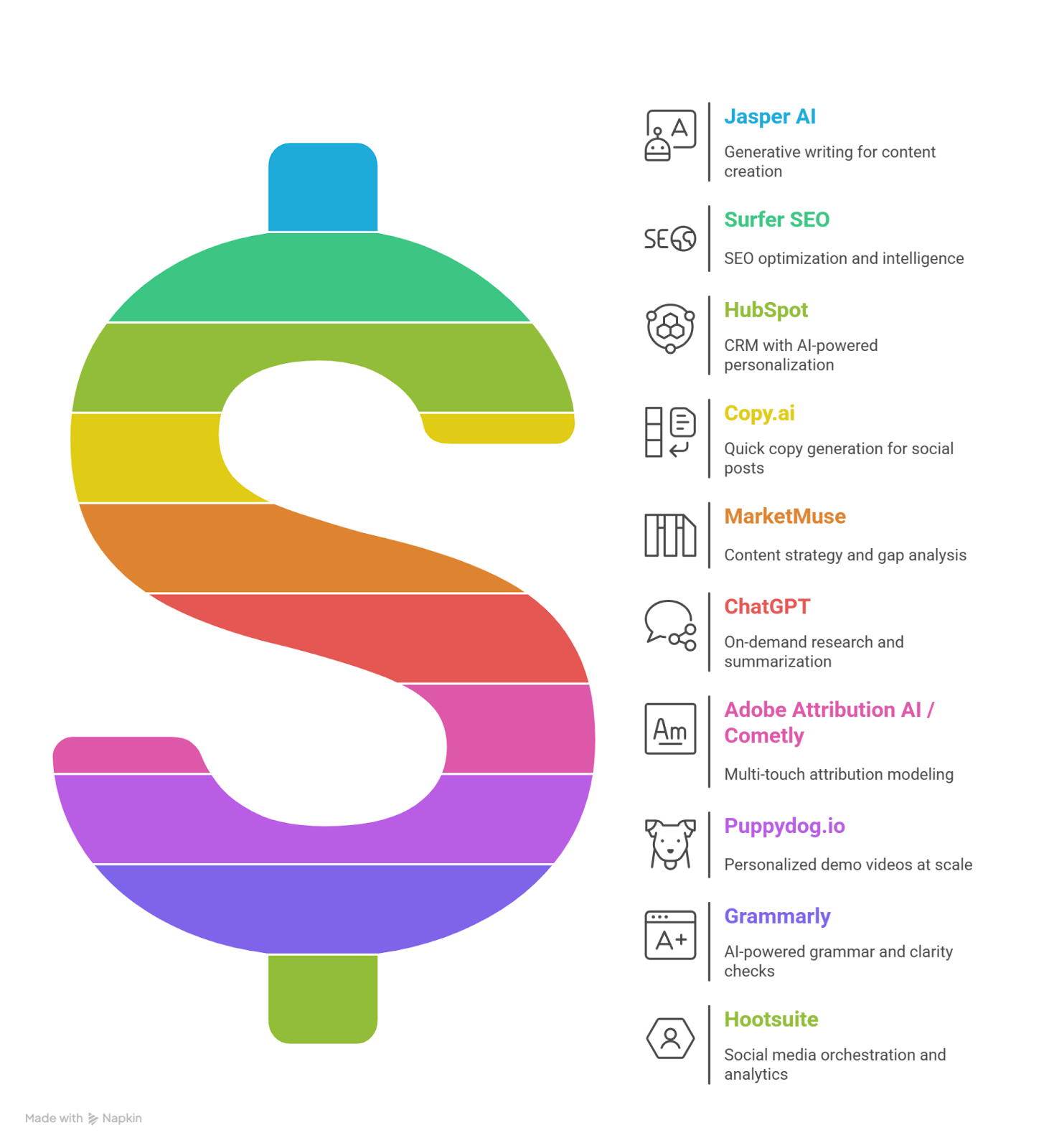
1. Jasper AI: Content creation that keeps your voice
What it does: Generative writing for blog drafts, ad copy, emails, and more.
Why it matters: When deadlines pile up, Jasper helps you produce high-quality drafts fast. Use it for ideation and outlines, then human-edit for nuance. That combo keeps speed without sounding robotic.
Quick tip: Always run a brand-voice prompt and edit like an editor, not a proofreader.
2. Surfer SEO: Optimization + on-page intelligence
What it does: Analyzes top-ranking pages and recommends structure, keywords, and content length.
Why it matters: Faster content means nothing if it doesn’t rank. Surfer ties writing to measurable SEO signals so your work has a fighting chance in SERPs.
Quick tip: Use Surfer’s outline generator to speed up briefs for writers. For more advanced strategies, check out this step-by-step guide to creating a winning product marketing plan.
3. HubSpot: A CRM that thinks
What it does: Unified customer data, smart segmentation, and AI-powered email personalization.
Why it matters: Clean data is the backbone of any AI initiative. HubSpot’s Data Hub reduces dirty records and gives your AI better context, which means smarter personalization and higher conversion rates.
Quick tip: Start with a smaller segment and test AI-email variations against human-written control messages.
4. Copy.ai: Quick copy, less hassle
What it does: Fast generation for social posts, product descriptions, and microcopy.
Why it matters: Perfect for teams who need lots of short-form content without losing personality.
Quick tip: Treat outputs as first drafts. Add one human-specific detail to make it sing.
5. MarketMuse: Content strategy and competitive gap analysis
What it does: Identifies topic clusters and content gaps to improve authority over time.
Why it matters: It’s not just about writing more; it’s about writing smarter. MarketMuse helps prioritize pages that will drive long-term traffic.
Quick tip: Pair MarketMuse insights with Surfer’s on-page recommendations.
6. ChatGPT (or Claude/Gemini): Your on-demand research assistant
What it does: Rapid research, outline drafting, and data summarization from uploads and prompts.
Why it matters: Need a quick brief from a messy dataset or a summary of customer feedback? LLMs save hours of grunt work.
Quick tip: Always verify facts and cite primary sources for public-facing content.
7. Adobe Attribution AI / Cometly: Smarter budget decisions
What it does: Multi-touch attribution and incremental impact modeling.
Why it matters: Knowing which channels truly drive revenue lets you reallocate spend confidently, often the fastest route to better ROI.
Quick tip: Use attribution outputs to test small budget shifts before full reallocation.
8. Puppydog.io: Personalized demo videos at scale
What it does: Converts screen recordings or screenshots into polished, personalized product demo videos.
Why it matters: Demos are often the best persuasive asset for B2B SaaS, but they’re time-consuming. Puppydog.io lets you deliver tailored demos for different buyer personas without burning your SEs’ time.
Real-world use: Send a short, persona-specific demo after a discovery call; conversion rates and meeting-to-close times usually improve when prospects see a demo crafted for their context.
Quick tip: Keep videos under 3 minutes and focus on one main value point per video. If you’re curious about how SaaS marketers can leverage demo automation for broader growth, read the B2B SaaS marketing playbook.
9. Grammarly: Polished, readable content at scale
What it does: Grammar, clarity, and tone suggestions powered by AI.
Why it matters: Small errors cost credibility. Grammarly helps maintain professional quality across large teams.
Quick tip: Customize tone settings to match your brand’s voice.
10. Hootsuite (with AI insights): Social orchestration + analytics
What it does: Scheduling, post-performance analytics, and AI-driven best times to post.
Why it matters: Social success isn’t random. AI helps you be consistent and responsive without constant screen time.
Quick tip: Use listening insights to feed content ideas back into your editorial calendar
Strategic wrap-up, Build smart, not bloated
Start with data and CRM integrity, then add tools that amplify your highest-leverage activities (content and demos for SaaS, social, and listening for consumer brands). Don’t buy everything at once. Pick 1–2 tools, measure impact, and scale what works.
Call to action: Try puppydog.io or one content + one attribution tool for 30 days. Track time saved and conversion lift, you’ll be surprised how quickly ROI appears.
FAQs
Q: Which tool should I try first?
A: If your data is messy, start with your CRM (HubSpot). If content creation is the bottleneck, start with Jasper + Surfer.
Q: Will these tools replace my marketing team?
A: No. They remove repetitive tasks so your team can focus on strategy, creative direction, and relationships.
Q: How quickly will I see ROI?
A: Some wins (time saved, faster content cadence) are immediate. Revenue impact depends on tests and attribution, typically within 3–6 months for meaningful results.
Q: Is puppydog.io only for big companies?
A: No. It’s particularly helpful for SaaS teams of any size who need consistent, scalable demo assets.
Q: How do I avoid tool overload?
A: Create a 90-day roadmap: pick a single problem, choose one tool to solve it, measure results, then iterate.
Further Reading
Want to dig deeper into AI marketing, demo automation, and tool strategy? Here are a few reliable resources (all links verified and working at the time of writing):
- 24 AI Marketing Tools Your Team Needs — a practical roundup from Sprout Social covering workflow accelerators and smarter decision-making. Read on Sprout Social
- How to Design an AI Marketing Strategy — Harvard Business Review explains how to align AI with your overall marketing goals and day-to-day operations. Read on HBR
- 5 AI Marketing Trends to Watch in 2025 — WordStream highlights emerging shifts in personalization, automation, and predictive insights. Read on WordStream




